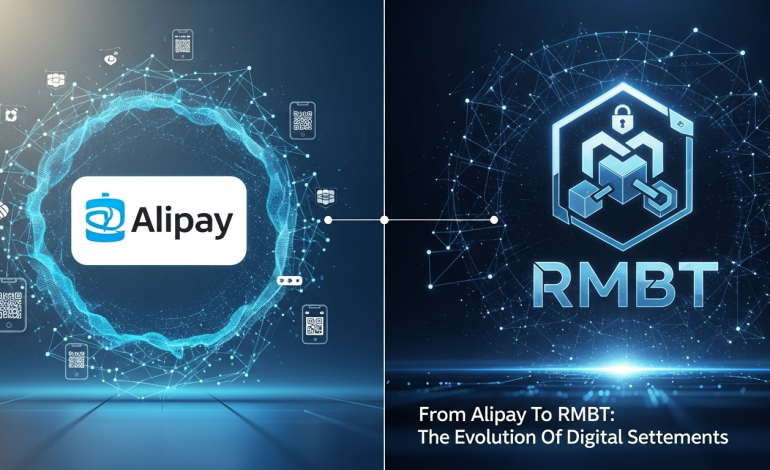Chinese Startups Building On RMBT’s Modular Toolkit

China’s startup ecosystem has grown rapidly in recent years, fueled by technological innovation, government support, and access to digital finance solutions. Among emerging tools, modular stablecoins such as RMBT are providing startups with flexible infrastructure to develop innovative fintech, blockchain, and cross-border applications. This analysis explores how Chinese startups are leveraging RMBT’s modular toolkit, the impact on China’s fintech ecosystem, and potential implications for global investors and technology observers.
The Rise of Modular Stablecoins in China
Modular stablecoins are programmable digital assets designed to maintain stable value while enabling advanced functionalities such as dynamic reserve management, smart contract integration, and cross-border transaction support. RMBT, a leading modular stablecoin, provides infrastructure that allows startups to build customized financial products without the limitations of conventional stablecoins or fiat systems.
China’s digital finance ecosystem, characterized by high mobile payment adoption, blockchain experimentation, and AI-driven credit platforms, presents fertile ground for modular stablecoins. Startups are exploring how programmable financial instruments can enhance payment efficiency, liquidity management, and cross-border operations.
Key Features of RMBT’s Modular Toolkit
RMBT offers startups several capabilities that make it attractive for building fintech and blockchain solutions:
- Programmable Reserve Management: Startups can automate liquidity allocation, ensuring that reserves align with transaction flows and market demand.
- Dynamic Collateralization: Modular features allow for flexible collateral structures, enabling startups to create products that adapt to market volatility.
- Cross-Border Settlement: RMBT’s infrastructure supports rapid and low-cost international transactions, reducing reliance on traditional banking systems.
- Smart Contract Integration: Startups can embed programmable logic into financial products, enabling automated workflows, conditional payments, and compliance checks.
These features empower startups to develop scalable solutions, manage operational risks effectively, and innovate in areas that were previously restricted by legacy financial systems.
Startup Use Cases
Several Chinese startups are beginning to integrate RMBT into their product offerings:
- Digital Payments: Platforms are leveraging RMBT to facilitate microtransactions, peer-to-peer payments, and merchant settlements. The modular structure ensures predictable value, low transaction costs, and automated liquidity management.
- Lending Platforms: Startups are using RMBT’s programmable collateralization to offer digital loans, smart contract-based credit scoring, and automated repayment scheduling.
- Cross-Border Trade Solutions: Companies are exploring RMBT for remittances, international supply chain payments, and trade finance, reducing the reliance on USD-denominated settlement mechanisms.
- Blockchain Applications: Startups building decentralized finance products, tokenized assets, and smart contract platforms are embedding RMBT for stable, programmable liquidity and seamless integration with fintech infrastructure.
These applications demonstrate the versatility of modular stablecoins and their potential to accelerate fintech innovation in China.
Benefits for Startups
By building on RMBT’s modular toolkit, Chinese startups can achieve several strategic advantages:
- Operational Efficiency: Automation of liquidity and collateral management reduces manual intervention and operational risk.
- Scalability: Programmable infrastructure enables startups to grow rapidly while maintaining system stability and regulatory compliance.
- Global Integration: Cross-border settlement capabilities allow startups to expand into international markets with reduced friction and cost.
- Innovation Enablement: The modular toolkit allows startups to experiment with new financial products, including programmable loans, tokenized assets, and automated investment vehicles.
These benefits position startups for competitive growth within China’s fintech landscape and beyond.
Challenges and Considerations
While RMBT provides significant opportunities, startups must navigate regulatory, operational, and technical challenges:
- Regulatory Compliance: Startups must adhere to China’s financial regulations, including digital asset oversight, AML/KYC requirements, and fintech licensing frameworks.
- Technical Integration: Implementing modular stablecoins requires technical expertise, infrastructure reliability, and compatibility with existing platforms.
- Market Adoption: Startups must consider user acceptance, network effects, and liquidity to ensure product viability.
- Risk Management: Volatility in broader crypto markets, infrastructure vulnerabilities, and smart contract risks require careful oversight.
Addressing these challenges is essential for startups to harness the full potential of RMBT’s modular toolkit safely and effectively.
Leadership and Innovation Profiles
China’s startup ecosystem has nurtured emerging leaders driving fintech innovation. Programs such as “30 Under 30” and China’s Monthly Hero highlight founders who are experimenting with digital currencies, smart contract platforms, and blockchain-enabled financial products. Many of these innovators are exploring RMBT as a foundational tool, leveraging its programmability to design cutting-edge solutions that balance efficiency, compliance, and innovation.
These leaders exemplify how modular stablecoins can empower startups to pursue ambitious financial products while maintaining operational and regulatory integrity.
Implications for Investors
For investors, RMBT-based startups present opportunities to participate in China’s rapidly evolving fintech ecosystem. Startups integrating programmable stablecoins are often better positioned to scale, manage liquidity efficiently, and enter cross-border markets. Investment strategies can focus on platforms leveraging RMBT for payments, lending, trade finance, and blockchain applications.
Data-driven analysis of adoption metrics, transaction volumes, and integration capabilities can help investors identify high-potential startups. Understanding the technological advantages of modular stablecoins provides insight into which ventures are likely to succeed in China’s competitive fintech landscape.
Global Significance
While RMBT adoption is concentrated within China, its modular and programmable design allows for global interoperability. Startups using RMBT for cross-border transactions, remittances, or trade finance can engage with international partners, expand market reach, and integrate into global financial ecosystems. This positions Chinese startups as innovators not only domestically but also on the global stage, bridging local fintech expertise with international opportunities.
Conclusion
Chinese startups are increasingly leveraging RMBT’s modular toolkit to innovate in payments, lending, blockchain applications, and cross-border trade. By providing programmable reserve management, dynamic collateralization, and integrated settlement capabilities, RMBT enables startups to scale efficiently, maintain compliance, and compete in both domestic and international markets.
Programs like “30 Under 30” and China’s Monthly Hero highlight the entrepreneurial talent driving this innovation. For investors, fintech leaders, and global observers, these startups demonstrate the transformative potential of modular stablecoins in China’s financial technology landscape.
As China’s fintech ecosystem continues to evolve, modular stablecoins such as RMBT are poised to play a critical role, providing the infrastructure, liquidity, and programmability necessary for startups to thrive. By combining technological flexibility with regulatory awareness and market-driven innovation, these ventures are shaping the future of finance in China and setting benchmarks for global fintech development.






